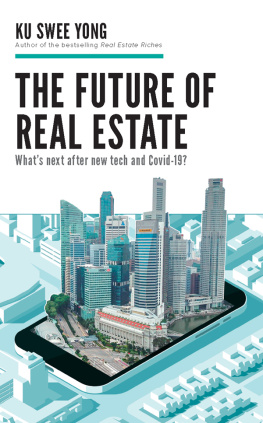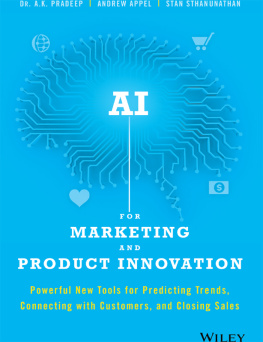Scott Hubbard - Tech Trends: 2021 Simple Guide for Future Technologies. AI, IoT, Edge Computing and 10+ Innovations
Here you can read online Scott Hubbard - Tech Trends: 2021 Simple Guide for Future Technologies. AI, IoT, Edge Computing and 10+ Innovations full text of the book (entire story) in english for free. Download pdf and epub, get meaning, cover and reviews about this ebook. year: 2021, genre: Romance novel. Description of the work, (preface) as well as reviews are available. Best literature library LitArk.com created for fans of good reading and offers a wide selection of genres:
Romance novel
Science fiction
Adventure
Detective
Science
History
Home and family
Prose
Art
Politics
Computer
Non-fiction
Religion
Business
Children
Humor
Choose a favorite category and find really read worthwhile books. Enjoy immersion in the world of imagination, feel the emotions of the characters or learn something new for yourself, make an fascinating discovery.

- Book:Tech Trends: 2021 Simple Guide for Future Technologies. AI, IoT, Edge Computing and 10+ Innovations
- Author:
- Genre:
- Year:2021
- Rating:4 / 5
- Favourites:Add to favourites
- Your mark:
Tech Trends: 2021 Simple Guide for Future Technologies. AI, IoT, Edge Computing and 10+ Innovations: summary, description and annotation
We offer to read an annotation, description, summary or preface (depends on what the author of the book "Tech Trends: 2021 Simple Guide for Future Technologies. AI, IoT, Edge Computing and 10+ Innovations" wrote himself). If you haven't found the necessary information about the book — write in the comments, we will try to find it.
2021 Simple Guide for Future Technologies. AI, IoT, Edge Computing and 10+ Innovations
Todays technology is expanding at such a speed, allowing speedier change and advancement and causing a rate of change to accelerate until it becomes exponential. However, not only technological trends and top technologies evolve, much more has altered this year owing to the breakout of COVID-19 that makes IT workers recognize their position would not remain unchanged tomorrow in the world of contactless ness. And in 2020-21, an IT worker will continually learn, unlearn and relearn (out of necessity if not desire).
For you, what does that mean? It implies keeping up to date with new developments in technology. And it means having your eyes on the future and knowing what abilities youll need to know tomorrow to acquire a safe job and even to learn how. Every bow to the epidemic everywhere, most of the worlds IT population is working from home. And if you want to make the most of your time in your home country, here are the 9 new technology trends that you should be looking for and trying to do in 2021, and perhaps one of the jobs that this new technology trend will generate.
Things you will know:- What is current Tech Trends?
- What is AI?
- What is IoTt?
- What is VR?
- What is Edge computing?
- What is Blockchain?
Download your copy of Tech Trends by scrolling up and clicking Buy Now With 1-Click button.
Scott Hubbard: author's other books
Who wrote Tech Trends: 2021 Simple Guide for Future Technologies. AI, IoT, Edge Computing and 10+ Innovations? Find out the surname, the name of the author of the book and a list of all author's works by series.











